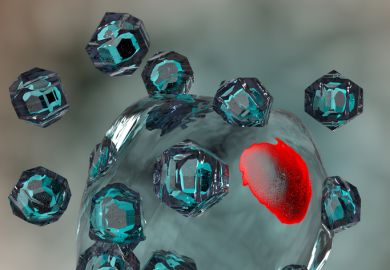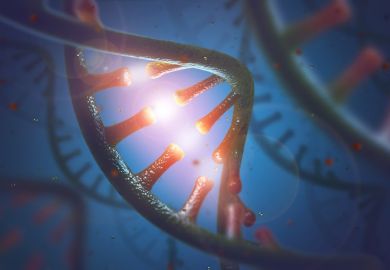Author: Daniel C. Harris
Edition: Fifth international
Publisher: W.H. Freeman/Palgrave Macmillan
Pages: 640
Price: £52.99
ISBN: 9781429295765
This is the type of textbook not usually found on your typical chemistry undergraduate's reading list. Although practical techniques are central to any scientific degree, they are generally taught through hands-on experimental sessions, with minimal reading outside the laboratory. However, even a quick glance over the first three chapters of this textbook will be enough to persuade the reader of its value in supporting and enhancing the practical knowledge of most science students. Designed as a self-study guide for all those who use chemical analysis in the laboratory, its brilliantly comprehensive style makes it the perfect starting point for non-chemists who require a solid grounding in the chemical principles and techniques they must employ, as well as an estimable companion for chemists who may need to refresh their knowledge or who have found themselves developing bad practical habits.
Beginning with an in-depth discussion of the analytical process and the tools and mathematical principles required by the analyst, the book goes on to give a good overview of numerous analytical techniques essential to so many areas of science, from medical diagnosis to geology.
A broad range of material is covered but, in some cases, the author has been deliberately superficial, with the aim of offering a truly practical guide. Avoidance of wordy and overly complex explanations does keep the text well focused, although a more experienced chemist may find the style too basic and occasionally patronising.
The content is well organised and unfailingly clear, ensuring that the reader not only understands how to use the techniques explained but also grasps the necessity of good scientific practice. Each section begins with a real-life example underlining the significance of the subject matter, and is interspersed with worked examples. Detailed problems are found at the end of each chapter and often require the reader to design an experiment, thus encouraging independent thought from the start. Well-explained and relevant figures support the text, although unfortunately they are presented in muted shades of green and black, which is rather at odds with the author's absorbing style.
The real strength of this book is that it manages to make what is often seen as a dry topic seem engaging and interesting. The author's enthusiasm is well conveyed, along with a clear and inspiring sense of what makes a good analytical chemist. Used to its full advantage, this book provides the necessary foundation to enable readers to approach any practical analytical problem with confidence, competence and real enjoyment.
Who is it for? Any undergraduate scientists who use chemical analysis, particularly those with a limited background in chemistry.
Presentation: Crystal-clear but fairly bland.
Would you recommend it? Most definitely. There is a place for this on the bookshelf of both novice chemical analysts and the most seasoned of chemists looking for a refresher in good analytical technique.
Register to continue
Why register?
- Registration is free and only takes a moment
- Once registered, you can read 3 articles a month
- Sign up for our newsletter
Subscribe
Or subscribe for unlimited access to:
- Unlimited access to news, views, insights & reviews
- Digital editions
- Digital access to THE’s university and college rankings analysis
Already registered or a current subscriber? Login



